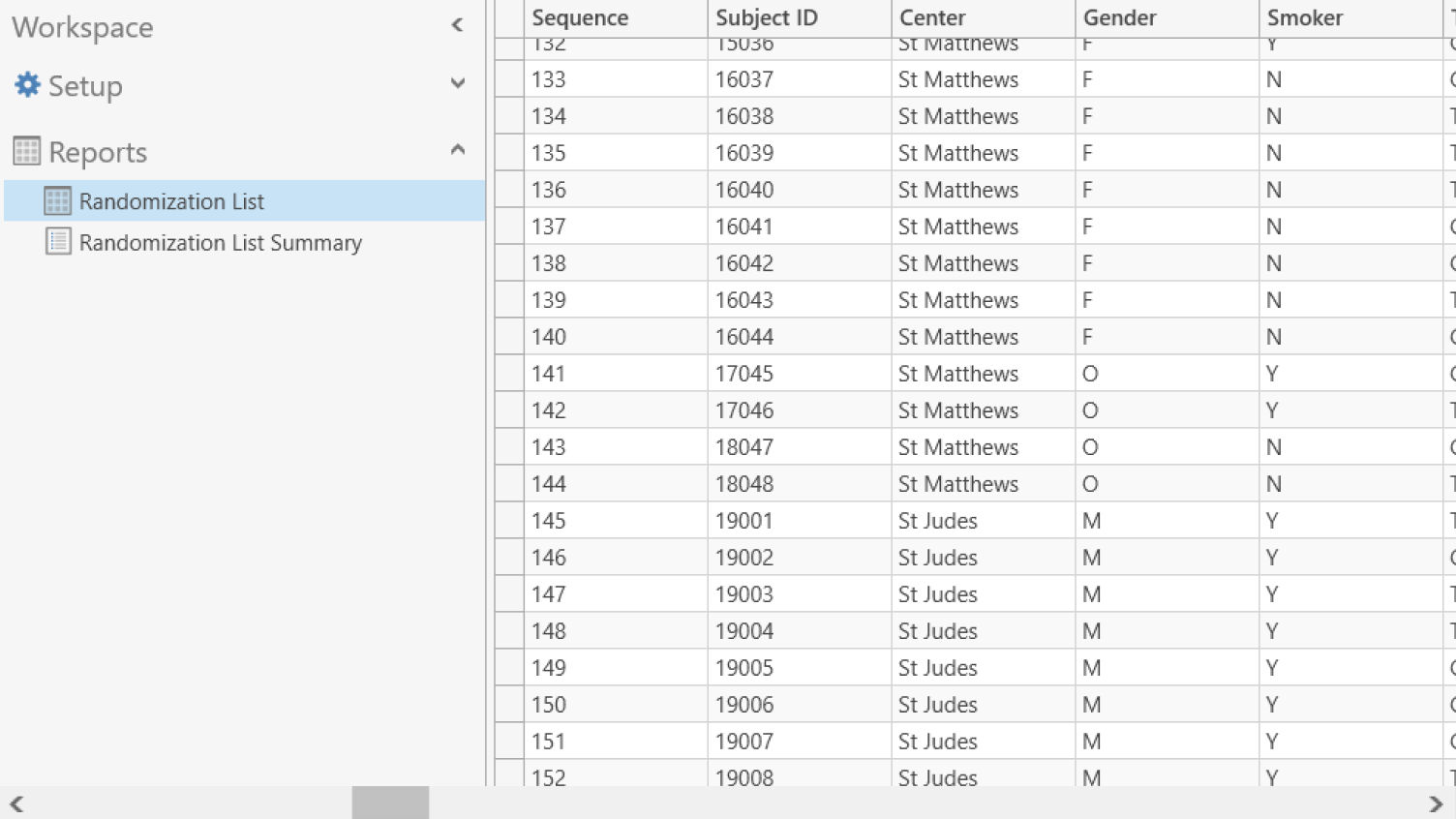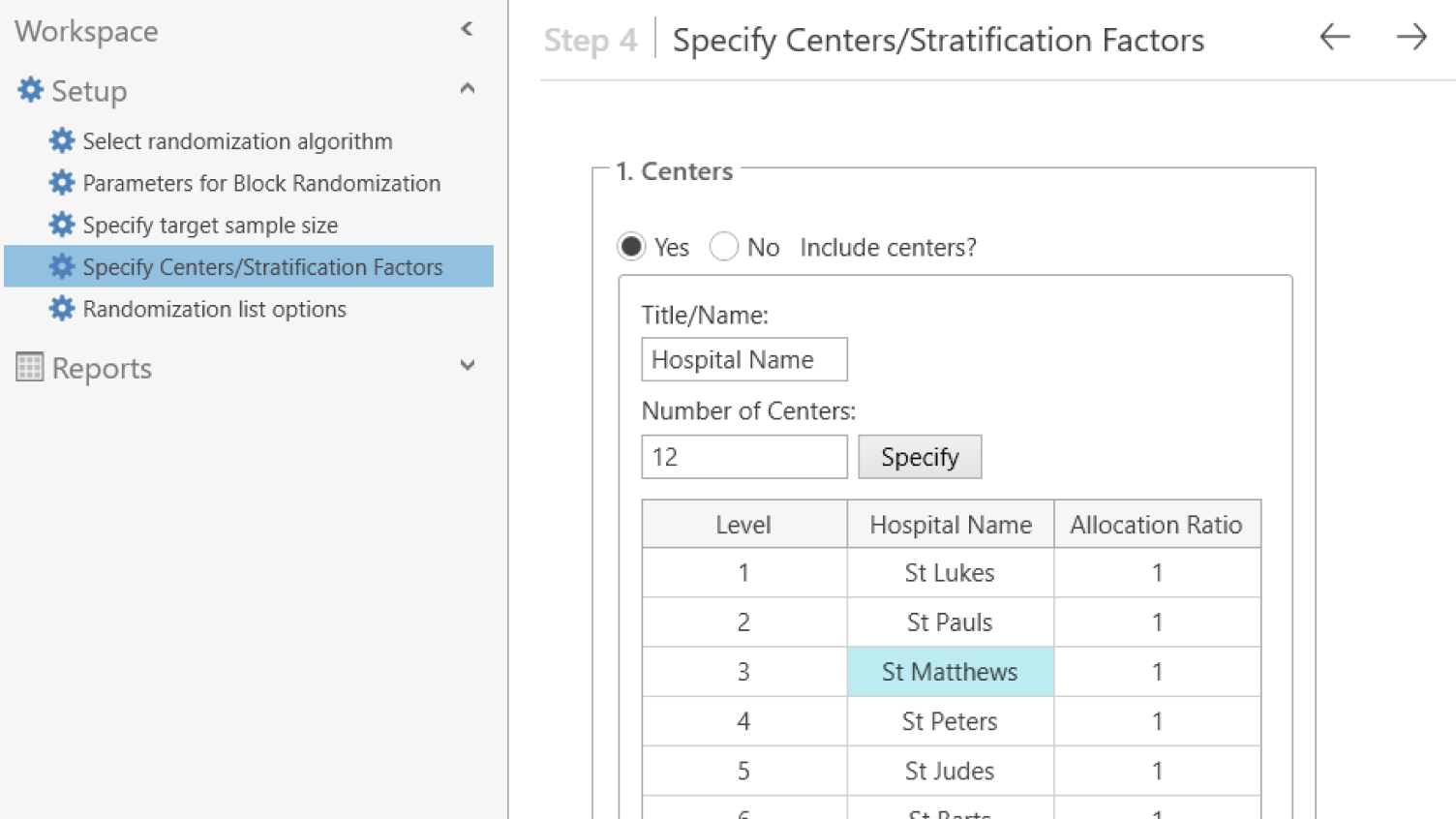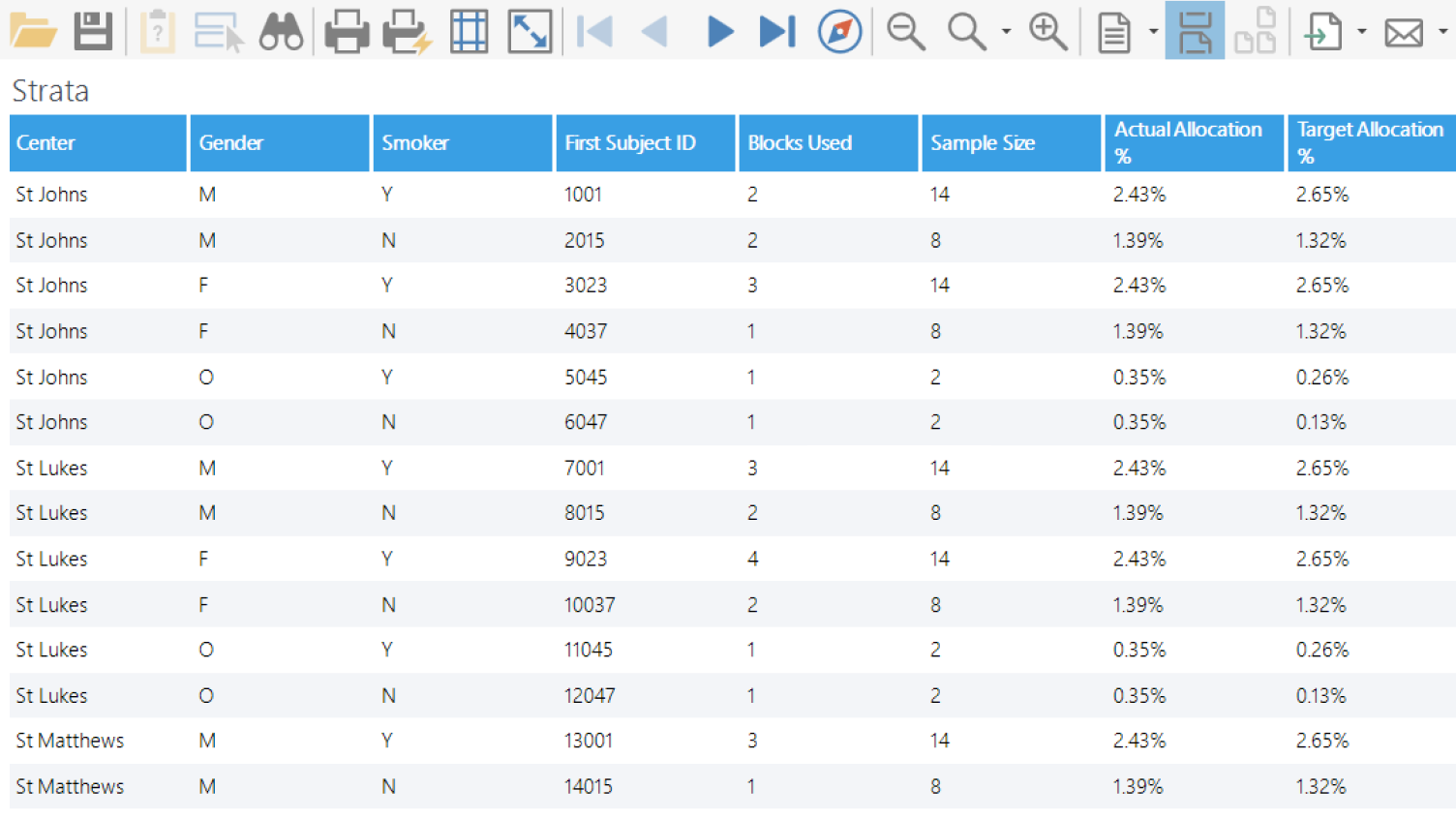Valid & Reliable Randomization
Robust Randomization
Robust statistical procedures such as block randomization enhance the reliability & validity of randomization


Account for Centers
Ensure that randomization assigns subjects appropriately across centers such as hospitals
Stratified Randomization
Create a randomization list that ensures balance in up to two additional factors such as age, sex or health status by stratifying your list

Use Randomization Lists for reliable treatment assignment across centers and other factors
Randomization Lists
Generate valid randomization lists for a variety of designs
Block Randomization
Block randomization with full control over block size and identifiers
Additional Algorithms
Compare complete randomization, biased coins, random sorting and more
Center Adjusted Randomization
Automatically generate adjusted randomization lists for each hospital
Stratified Randomization
Adjust randomization scheme for covariates such as age and gender
Summary Report
Quickly evaluate and communicate randomization list characteristics
Randomization in Clinical Trials
Watch this webinar to learn about the benefits of randomization in clinical trials, different randomization list algorithms and how you can select the right one for your needs
Frequently Asked Questions
What is Randomization ?
Randomization is a vital part of ensuring valid statistical inferences from common statistical tests used widely in clinical trials. Randomization creates treatment groups that are comparable and reduces the influence of unknown factors. However, in clinical trials there are often ethical and logistical considerations that mean that simple random allocation may not be appropriate.
The Randomization List Tool in nQuery
Randomization Lists tool allows for the easy generation of randomization lists that account both for randomization and any balancing covariates of interest.
The Randomization Lists tool will allow the user to generate randomization lists for trials with up to 25 treatments and centers (such as hospitals), and up to 2 additional stratification factors (such as age or gender) with up to 25 strata allowed for each. In addition, the user will be given algorithm-specific options (such as block size for block randomization) and the ability to add block or subject-level IDs for easier understanding and communication with stakeholders.
Recommended Resources
Get started with nQuery today
Start for free and upgrade as your team grows















